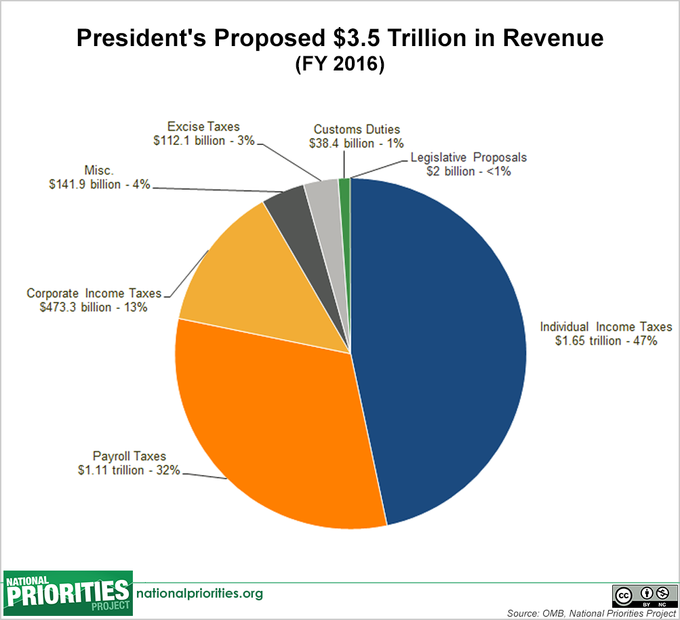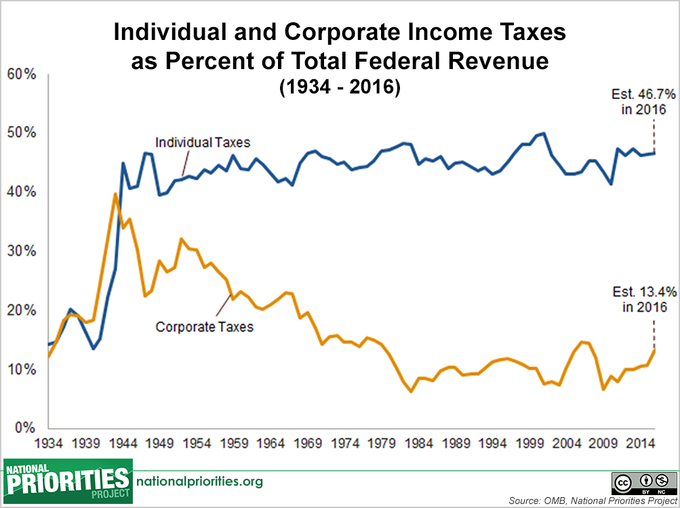President Obama Proposes 2016 U.S. Budget
Taxes and Revenue
The president’s proposal would raise $3.5 trillion in tax revenue in fiscal year 2016, an increase of more than nine percent relative to 2015. It includes mechanisms for raising new tax revenues, through changes to taxes on capital gains and corporate profits, as well as new corporate fees. It also includes new proposed tax breaks.

Six in 10 Americans believe wealthy individuals don’t pay their fair share in taxes.[3]
The budget proposal would bring in new revenues by changing how capital gains (income earned from investments in stocks, real estate, etc.) are taxed. Specifically, the president would raise the top capital gains tax rate from 23.8 percent to 28 percent – the top rate under President Reagan – and would close the “trust fund loophole” under which capital gains that are inherited from a previous generation are never taxed. This would raise an estimated $208 billion over 10 years.
The budget would impose a new fee on financial institutions that engage in “excessive borrowing.” The new fee would raise $112 billion over 10 years. The president would also reform the business tax system and close loopholes in order to shore up the nation’s Highway Trust Fund, expected to run out of funding in May 2015, for another six years.

The president’s budget includes a series of new or expanded tax breaks targeted at working and middle class Americans. It would expand the Earned Income Tax Credit (EITC) to low-income childless workers and provides the credit to more workers based on income and age. It triples the current maximum child care tax credit to $3,000 per child. It would also create a new second-earner tax credit that would provide $500 to families where both spouses work, and it expands eligibility for the American Opportunity Tax Credit, a credit that helps students pay for college expenses. These middle-class tax breaks would be paid for by proposed changes to the capital gains tax and new financial services fee.
More about the President's 2016 Budget:
Total Spending
Education
Military and War
Climate Change
Social Security & Health Care
Budget Deficit
What Is the President’s Budget Request?
Full Analysis
